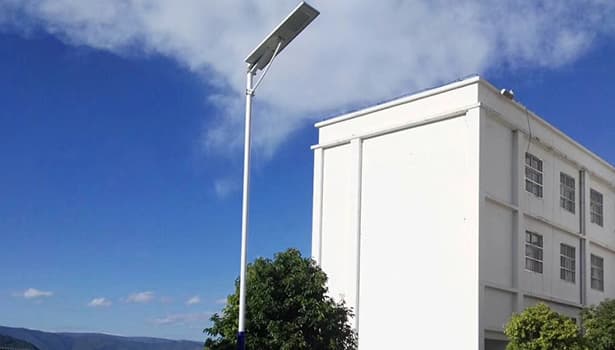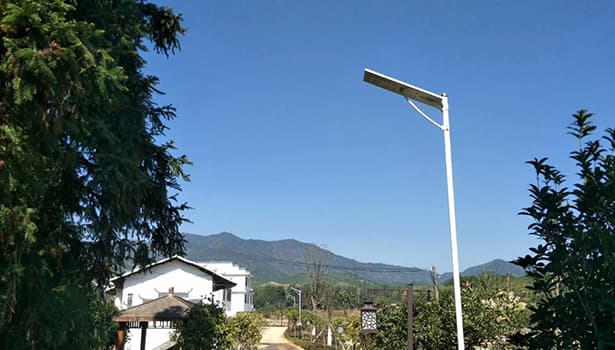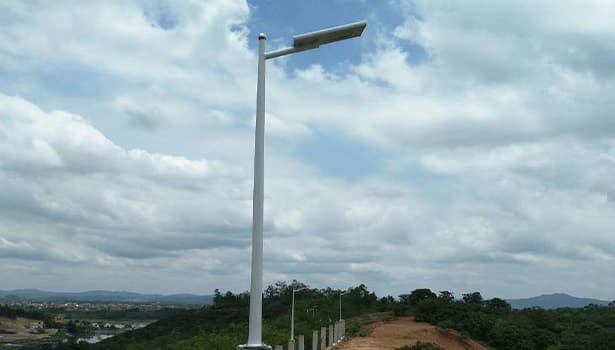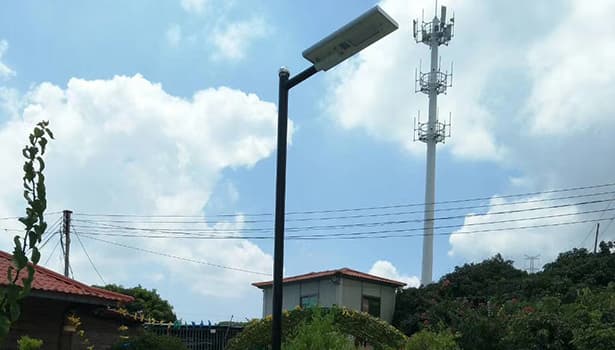Innovative Uses of Solar Street Lights in Rural Areas
Jan 03, 2025
Many people are familiar with solar street lights, especially in China's new rural construction; their popularity is still relatively high. Especially for residents living in remote villages, the original night was dark and bumpy. After installing solar led street lights, they will automatically light up every night, lighting a safe way home for people who go out early and return late. This is undoubtedly a huge security guarantee for people living here. In fact, for rural areas, the benefits of installing solar powered street lights are not only that, but there are many more.

In Kenya, about 75% of rural areas cannot be connected to the national power grid. The long-term use of kerosene lamps for lighting is not only costly but also seriously polluting and unsafe. Kenya is located in the tropics and is rich in solar energy resources. The government is committed to achieving the goals of electricity access and sustainable development in the<Vision 2020>, and rural lighting projects are an important part of it. Driven by the government and supported by international organizations, many rural areas have installed solar street lights, which have solved the problem of nighttime lighting for local residents and improved the safety of nighttime activities.

The Barangay Night Market in the Philippines is a very typical case. Barangay is the most basic community unit in the Philippines. Many barangays are located in remote mountainous areas, with insufficient power supply and lack of lighting, which limits the scale and business hours of local night markets. By installing solar led street lights in the main areas, entrances, passages, parking lots, and other places of Barangay Night Market, the lighting problem was solved, the business hours were extended, the income of vendors was increased, the bright environment significantly reduced theft and accidents, and made residents more willing to participate in night market activities.
A traditional street light (using high-pressure sodium lamps or halogen lamps) has a power of about 150 watts, runs for 10 hours a day, and consumes about 547.5 kWh of electricity per year. Based on the global average carbon emission coefficient of thermal power generation of 0.85 kg CO₂/kWh:

Indian Rural Education Support Program installed solar lamps in rural schools and students' homes. More than 80% of students said that their learning time increased by 1-2 hours and their graduation rate increased by 15%.
Guizhou Mountain Education Lighting Project in China installed solar powered outdoor street lights around villages and schools to ensure the safety of students' night travel and increase the retention rate of teachers by 20%.

Solar street lights have a wide range of application value in rural areas. They not only solve the problem of nighttime lighting in areas with insufficient grid coverage, but also significantly improve nighttime safety, reduce crime rates, promote the development of rural night market economy, and reduce carbon emissions, helping to achieve sustainable environmental protection goals. In addition, solar powered street lights also provide support for education and community development, extend students' learning time, improve school conditions, and enhance community vitality. This economical, efficient, and environmentally friendly lighting method is becoming an important driving force for rural revitalization and sustainable development around the world.

1. Solve the nighttime lighting in off-grid areas
According to relevant data, more than 770 million people in the world lack reliable electricity supply. The areas where they live are not covered by the power grid and cannot use electricity resources normally, causing these places to fall into darkness at night. Solar technology provides a feasible solution for lighting in these areas.In Kenya, about 75% of rural areas cannot be connected to the national power grid. The long-term use of kerosene lamps for lighting is not only costly but also seriously polluting and unsafe. Kenya is located in the tropics and is rich in solar energy resources. The government is committed to achieving the goals of electricity access and sustainable development in the<Vision 2020>, and rural lighting projects are an important part of it. Driven by the government and supported by international organizations, many rural areas have installed solar street lights, which have solved the problem of nighttime lighting for local residents and improved the safety of nighttime activities.
2. Enhance nighttime safety and security
Solar powered led street lights have significantly enhanced nighttime safety in rural areas by providing continuous and stable lighting. First, it improves road lighting and improves travel safety; second, bright light illuminates public spaces, leaving criminals with no hiding places, effectively reducing nighttime crimes and enhancing residents' sense of security, which is especially important for women and children in rural areas; in addition, stable and sustainable lighting is also crucial to improving local emergency response capabilities and can effectively improve rescue efficiency in emergency situations.
3. Promote the development of the night market economy
The path to rural economic development is relatively single, and farmers have low incomes. Installing solar street lights in markets and public places can promote the development of the night market economy and increase farmers' incomes.The Barangay Night Market in the Philippines is a very typical case. Barangay is the most basic community unit in the Philippines. Many barangays are located in remote mountainous areas, with insufficient power supply and lack of lighting, which limits the scale and business hours of local night markets. By installing solar led street lights in the main areas, entrances, passages, parking lots, and other places of Barangay Night Market, the lighting problem was solved, the business hours were extended, the income of vendors was increased, the bright environment significantly reduced theft and accidents, and made residents more willing to participate in night market activities.
4. Energy-saving, emission-reducing, sustainable, and environmentally friendly lighting solutions
Solar street lights can reduce 200–465 kg of CO₂ emissions per year by reducing dependence on traditional energy. Large-scale promotion of solar powered street lights can not only significantly reduce carbon emissions but also help achieve global climate change goals.A traditional street light (using high-pressure sodium lamps or halogen lamps) has a power of about 150 watts, runs for 10 hours a day, and consumes about 547.5 kWh of electricity per year. Based on the global average carbon emission coefficient of thermal power generation of 0.85 kg CO₂/kWh:
547.5 kWh × 0.85 kg CO₂/kWh = 465.4 kg CO₂/year
These carbon emissions can be completely avoided after replacing them with solar powered outdoor street lights. From this data, we can see that installing solar street lights can significantly reduce carbon emissions and promote the realization of environmental sustainable development goals.

5. Promote education and community development in rural areas
The installation of solar powered led street lights not only improves the infrastructure in rural areas but also provides strong support for community and education development by improving safety, supporting economic activities, and extending learning time. This sustainable lighting method is becoming an important driving force for rural revitalization.Indian Rural Education Support Program installed solar lamps in rural schools and students' homes. More than 80% of students said that their learning time increased by 1-2 hours and their graduation rate increased by 15%.
Guizhou Mountain Education Lighting Project in China installed solar powered outdoor street lights around villages and schools to ensure the safety of students' night travel and increase the retention rate of teachers by 20%.

Solar street lights have a wide range of application value in rural areas. They not only solve the problem of nighttime lighting in areas with insufficient grid coverage, but also significantly improve nighttime safety, reduce crime rates, promote the development of rural night market economy, and reduce carbon emissions, helping to achieve sustainable environmental protection goals. In addition, solar powered street lights also provide support for education and community development, extend students' learning time, improve school conditions, and enhance community vitality. This economical, efficient, and environmentally friendly lighting method is becoming an important driving force for rural revitalization and sustainable development around the world.




